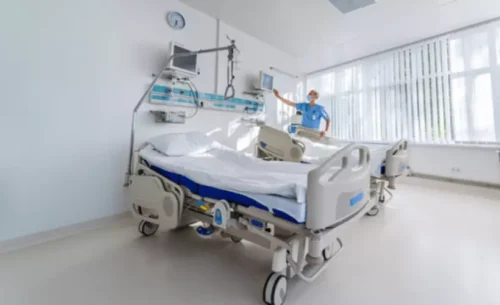
However, all immunoglobulins produced by one B-cell and its daughter cells specifically recognize the same antigen. Alcohol feeding suppresses the production and secretion of certain acute-phase proteins (i.e., type II cell surfactant). This effect may contribute to lung injury in response to inflammation (Holguin et al. 1998).
Restricted immunological and cellular pathways are shared by murine models of chronic alcohol consumption

These different layers of interaction make validation of the mechanisms by which alcohol affects immune function challenging. Significant differences between the immune system of the mouse—the primary model organism used in immune studies—and that of humans also complicate the translation of experimental results from these animals to humans. Moreover, the wide-ranging roles of the immune system present significant challenges for designing interventions that target immune pathways without producing undesirable side effects. Clinicians have long observed an association between excessive alcohol consumption and adverse immune-related health effects such as susceptibility to pneumonia.
Professional development
- Taken together, these data suggest that chronic ethanol exposure interferes with immunity to new antigens but not with immunity established before alcohol consumption.
- Acute and chronic alcohol exposure can interfere with various aspects of the adaptive immune response, including the antigen presentation required to activate T- and B-cells, the activity of CD4+ and CD8+ T-cells, and the activity of B-cells.
- In addition to pneumonia, alcohol consumption has been linked to pulmonary diseases, including tuberculosis, respiratory syncytial virus, and ARDS.
Furthermore, it has been described that alcohol consumption would also have effects on other microbiota derived metabolites, leading to increases in branched-chain amino acids [77] and peptidoglycans [78]. However, studies showing the effect of alcohol on these microbiota derived metabolites are scarce. In addition to laboratory studies confirming the impact of alcohol consumption on the innate immune system, several studies have looked at how heavy drinking can alter plasma cytokine levels. To this end, one study analyzed IL-10, IL-6, IL-18, and tumor necrosis factor α (TNF-α) levels in 25 non-treating seeking heavy drinkers after they had consumed an alcoholic drink. The researchers reported significant reductions in the TNF-α levels three and six hours after the alcohol consumption. Joshi and colleagues (2009) found that alcohol-fed animals had lower zinc levels in the alveolar compartment compared with control animals and that this level did not correlate with zinc blood levels, which were within normal range.
Effects on CD4+ (Helper) T-Cells
The most significant change was in glucocorticoid receptor (GR) signaling, which is known to down-regulate immune activity and inflammation by down-regulating NFκB (Pelaia, Vatrella et al. 2003). Indeed, NFκB was down-regulated in the alcohol group compared with the control group (Joosten, van Erk et al. 2012). The observed decrease in expression of NFκB is in line with earlier studies examining decreased pro-inflammatory cytokine production with moderate alcohol consumption. These observations could explain why animals drinking moderately generated a more robust response to MVA vaccination compared to controls and animals that drank to intoxication since these factors are critical for lymphocyte proliferation, T cell activation and effector function, and immune cell recruitment. Decreased IL-2 and CCL5 levels provide insight into possible mechanisms of impaired T cell recruitment and proliferation. Increases in IL-7 and IL-15, which are critical for T cell survival, may be compensatory mechanisms for reduced IL-2 levels.
- Thus, for men ages 21–64, low-risk drinking is defined as consumption of no more than 4 drinks per day or 14 drinks per week.
- Thus, alcohol interferes with various processes necessary to deliver neutrophils to the site of an infection, such as expression of a molecule called CD18 on PMNs in response to inflammatory stimuli and PMN “hyperadherence” to endothelial cells following appropriate stimulation (MacGregor et al. 1988).
- Specifically, using this model, we have shown that CMD enhances while CHD attenuates vaccine responses42,44,47.
- Similar results have been seen in SIV infection of male nonhuman primates (Bagby, Stoltz et al. 2003, Molina, McNurlan et al. 2006, Poonia, Nelson et al. 2006, Marcondes, Watry et al. 2008).
This defect was rescued when cultures were treated with the Rho kinase inhibitor, Y27632 indicative that ethanol reduced efferocytosis through the induction of Rho kinase activity in a dose-dependent manner (Boe, Richens et al. 2010). In addition, female mice that consumed 20% (w/v) ethanol for 8 weeks showed a reduction in LPS activated efferocytosis (Boe, Richens et al. 2010). In contrast to the effects of high ethanol doses, human monocytes isolated after 30 days of moderate beer consumption (330mL for women and 660mL for men) exhibited increased phagocytic, oxidative burst, and intracellular bactericidal activity when incubated with fluorescence-labeled E. In contrast to the inhibitory effects of acute alcohol treatment (up to 24 hours), prolonged exposure of human (men and women) peripheral blood monocytes to 25mM ethanol for 7 days increased LPS-induced TNF-α production without affecting IL-10 production (Pang, Bala et al. 2011). Prolonged exposure of Mono Mac 6 cell line to 25mM, 50mM and 75mM ethanol for 7 days also reverses the initial inhibition of LPS or PMA-induced TNF-α production in a dose-dependent manner (Zhang, Bagby et al. 2001). As reviewed by Szabo and Saha, alcohol’s combined effects on both innate and adaptive immunity significantly weaken host defenses, predisposing chronic drinkers to a wide range of health problems, including infections and systemic inflammation.
Alcohol and Structural Host Defense Mechanisms
- Nonhuman primates, on the other hand, voluntarily consume different amounts of alcohol and allow us to conduct studies in an outbred species that shares significant physiological and genetic homology with humans while maintaining rigorous control over diet and other environmental cues.
- Alcohol metabolism can also take place in the pancreas by acinar and pancreatic stellate cells, which contributes to the development of alcoholic pancreatitis (Vonlaufen, Wilson et al. 2007).
- Excessive or chronic alcohol consumption can trigger inflammation throughout the body, increasing your risk of chronic diseases.
- Multiple aspects of both arms of the immunity response are significantly affected by alcohol abuse, as described in the following sections.
- AICD likely results from decreased HSP90/eNOS association, which in turn attenuates the NO-stimulated cGMP/cAMP-dependent kinase activation pathway (Simet et al. 2013a; Wyatt and Sisson 2001).
- This model presents a unique opportunity to study the impact of chronic voluntary moderate/heavy drinking on immunity in a highly translational outbred animal model without any overt tissue damage.
(B) The gut microbiota is in close interaction with both the innate and the adaptive immune system. This interaction is frequently driven by SCFAs, which modulate local as well as systemic immune response. SCFAs can bind to G-protein-coupled receptors as FFAR2 and FFAR3 present on the surface of gut epithelial cells and immune cells including dendritic cells, macrophages and neutrophils, and are therefore important regulators of inflammatory response.

Ethanol is primarily metabolized in the stomach and liver by alcohol dehydrogenase (ADH) and cytochrome P450 2E1 (CYP2E1) (Zakhari 2006). Both enzymes convert alcohol to acetaldehyde, which is further metabolized to acetate by acetaldehyde dehydrogenase (ALDH) in the mitochondria. Acetate is then released into the blood where it is oxidized to carbon dioxide in the heart, skeletal https://ecosoberhouse.com/article/why-we-have-a-fear-of-being-sober-5-fears-about-it/ muscle, and brain (Zakhari 2006). All types of alcohol can trigger inflammation, though how much inflammation it causes can vary depending on the type of alcohol and amount consumed. Red wine contains polyphenols—antioxidant compounds with anti-inflammatory properties—which suggests it may cause less inflammation than other types of alcohol, such as liquor or beer.
Dose-dependent effects of chronic alcohol drinking on peripheral immune responses
These gut commensals play an important role in specific functions like nutrient and drug metabolism, protection against pathogens, maintenance of structural integrity of gut mucosal barrier, among others [5,6]. The gastrointestinal (GI) system is typically the first point of contact for alcohol as it passes through the body and is where alcohol is absorbed into the bloodstream. One of the most significant immediate effects of alcohol is that it affects the structure and integrity of the GI tract. For example, alcohol alters the numbers and relative abundances of microbes in the gut microbiome (see the article by Engen and colleagues), an extensive community of microorganisms in the intestine that aid in normal gut function. Alcohol disrupts communication between these organisms and the intestinal immune system. Alcohol consumption also damages epithelial cells, T cells, and neutrophils in the GI system, disrupting gut barrier function and facilitating leakage of microbes into the circulation (see the article by Hammer and colleagues).

Alcohol’s Burden on Immunity Following Burn, Hemorrhagic Shock, or Traumatic Brain Injury
- By contrast, alcohol is one of the many factors that disrupt the proper functioning of the gut, leading to a disruption of the intestinal barrier integrity that increases the permeability of the mucosa, with the final result of a disrupted mucosal immunity.
- Furthermore, these human macrophages had decreased phagocytic activity when exposed to Staphylococcus aureus in vitro.
- Drinking also makes it harder for your body to properly tend to its other critical functions, like fighting off a disease.
- Alcohol consumption also damages epithelial cells, T cells, and neutrophils in the GI system, disrupting gut barrier function and facilitating leakage of microbes into the circulation (see the article by Hammer and colleagues).
- For example, Davis and colleagues (1991) found that alcohol-fed rats failed to clear bacteria from the lungs and had increased mortality.
This increased risk of infection has been attributed to alcohol’s effect on the immune system. The following sections focus mainly on the effects of alcohol does alcohol weaken your immune system on gut, lung, and skin mucosal immunity. Numerous analyses also have evaluated the effects of ethanol exposure on the development of B cells.
